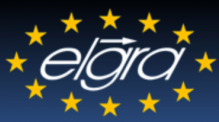All started in the late 70s with the advent of Spacelab and the possibility of research in low gravity environment on other platforms for microgravity research such as Ariane and TEXUS rockets. These new space facilities have provided scientist with a low effective gravitational field for prolonged periods for research in Life and Materials Sciences and led to a widening European interest in this fundamental research. However, at that time most scientists were working in isolation and it was for them very difficult to plan and manage a low gravity experiment considering operational complexity and the fact that experimenters were widely dispersed geographically.
In 1979, a group of seven scientists (Prof. F. Bonde-Petersen, Denmark, Dr. Y. Malméjac, France, Prof. L.G. Napolitano, Italy, Dr. J.F. Padday, UK, Dr. Stott, UK, Prof. H. Weiss, Germany and Dr. H.S. Wolff, UK) recognized the need for the European scientists involved in low gravity research to form an association to foster the cooperation and the coordination between them and to provide the ground-based expert advisory service for low gravity experiments. On June 18, 1979 the “European Low Gravity Research Association” ELGRA was born.
Since its creation, ELGRA has continuously encouraged and promoted low gravity research in both life and physical sciences within Europe with the permanent support of the European Space Agency. For several years ELGRA was a study group of the Parliamentary Assembly of the Council of Europe and contributed to a better visibility of Low Gravity research at the highest European spheres. However, its main action remains the improvement of the scientific collaboration between scientists from all over Europe in the field of low gravity research. In that effort, ELGRA has organized meetings and symposia resulting in 2011 in the 22nd ELGRA symposium held in Antwerp (Belgium) which gathered more than 150 scientists from all over the world. ELGRA also supports young researchers and students via grants and educational programs from ESA. In 2012, the ELGRA community counts not less than 200 active members. The success of ELGRA reflects the increasing interest of the European scientific community for low gravity.
Since the 80s, ELGRA’s scientists have been using new research facilities either on the ground, as the 133m drop tower at ZARM (Bremem, Germany) or centrifuges (ESTEC, DLR, MEDES), but also in space with the European Columbus module aboard the International Space Station dedicated to low gravity research. Nowadays, low gravity space research involves more and more scientists from all over Europe and space experiments require more preparation and especially a strong collaboration between the different partners. A collaboration platform dedicated to low gravity research as ELGRA remains crucial to facilitate this collaboration. Additionally, ELGRA joins both Physical as well as Life Sciences, what enhances translational research.
